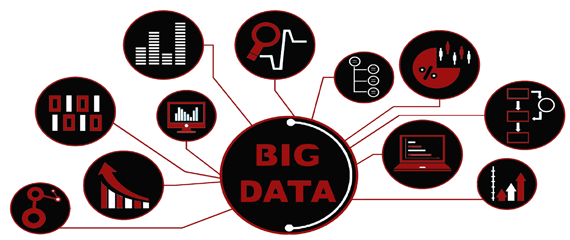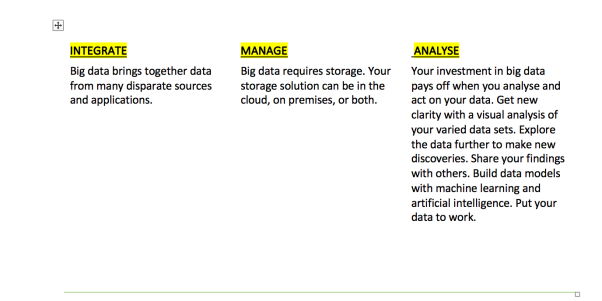Welcome back beautiful people,
Yayyyyy! Finally reached to the last blog post for this unit (Internet Marketing). The task for this week is to define the concept of Big data. Easy concept guys data which is big and complex called big data. isn’t it? Woohoo done for the week 😎🙌

On serious note lets research more and look at this concept in depth.
What is big data?
‘Big Data’ is an evolving term that describes any voluminous amount of structured, semi structured, and unstructured data that has the potential to be mined for information.
- Structured data is data that has been organised into a formatted repository, typically a database, so that its elements can be made addressable for more effective processing and analysis.
- Semi-structured data is data that has not been organised into a specialised repository, such as a database, but that nevertheless has associated information, such as metadata, that makes it more amenable to processing than raw data.
- Unstructured data is information, in many different forms, that doesn’t hew to conventional data models and thus typically isn’t a good fit for a mainstream relational database.
Big data is often categorised by Three Vs: the extreme volume of data, the wide variety of data types and the velocity at which the data must be processed.
Volume
The amount of data matters. With big data, you’ll have to process high volumes of low-density, unstructured data. This can be data of unknown value, such as Twitter data feeds, clickstreams on a webpage or a mobile app, or sensor-enabled equipment. For some organisations, this might be tens of terabytes of data. For others, it may be hundreds of petabytes. (“What is Big Data? | Oracle Australia”, 2018)
Velocity
Velocity is the fast rate at which data is received and (perhaps) acted on. Normally, the highest velocity of data streams directly into memory versus being written to disk. Some internet-enabled smart products operate in real time or near real time and will require real-time evaluation and action. (“What is Big Data? | Oracle Australia”, 2018)
Variety
Variety refers to the many types of data that are available. Traditional data types were structured and fit neatly in a relational database. With the rise of big data, data comes in new unstructured data types. Unstructured and semi structured data types, such as text, audio, and video require additional pre-processing to derive meaning and support metadata. (“What is Big Data? | Oracle Australia”, 2018)
How Big data works?

What is the importance of ‘big Data’?
According to SAS, the importance of big data doesn’t revolve around how much data you have, but what you do with it. You can take data from any source and analyze it to find answers that enable 1) cost reductions, 2) time reductions, 3) new product development and optimisied offerings, and 4) smart decision making. When you combine big data with high-powered analytics, you can accomplish business-related tasks such as:
- Determining root causes of failures, issues and defects in near-real time.
- Generating coupons at the point of sale based on the customer’s buying habits.
- Recalculating entire risk portfolios in minutes.
- Detecting fraudulent behaviour before it affects your organisation.
(Insights, Insights & Data?, 2018)
Reference List:
Big Data Analytics,Big Data Analytics solutions,sentiment analysis. (2018). Retrieved from http://expressanalytics.com/big-data-analytics.html
Insights, S., Insights, B., & Data?, W. (2018). What is Big Data and why it matters. Retrieved from https://www.sas.com/en_au/insights/big-data/what-is-big-data.html
What is Big Data ? – Definition from WhatIs.com. (2018). Retrieved from https://searchdatamanagement.techtarget.com/definition/big-data
What is Big Data? | Oracle Australia. (2018). Retrieved from https://www.oracle.com/au/big-data/guide/what-is-big-data.html